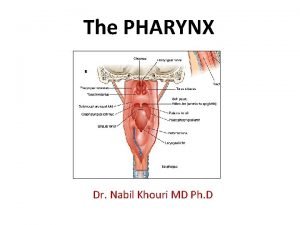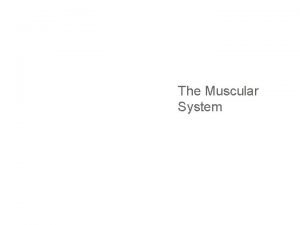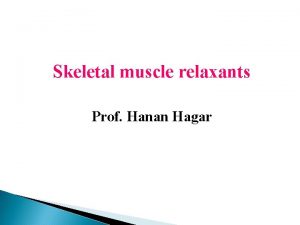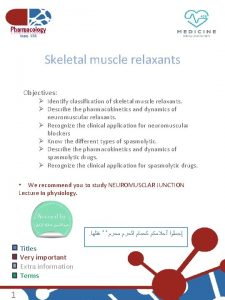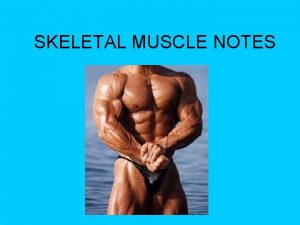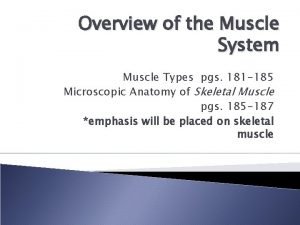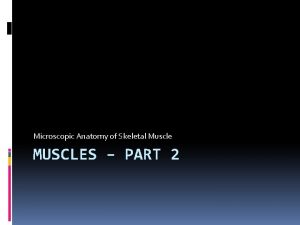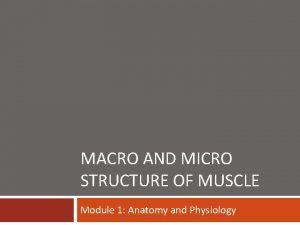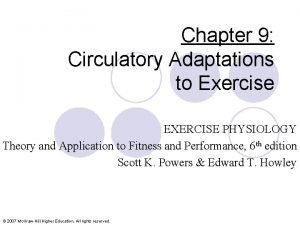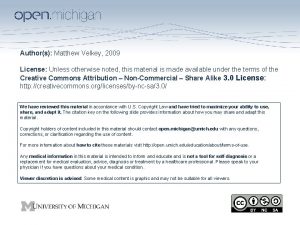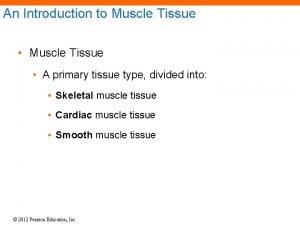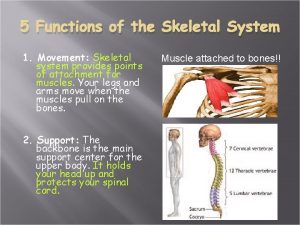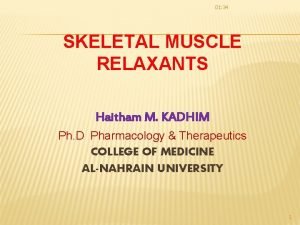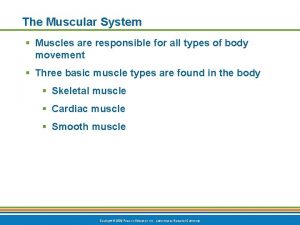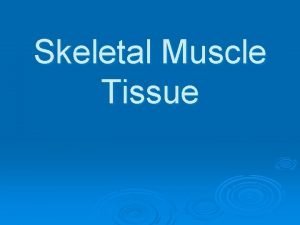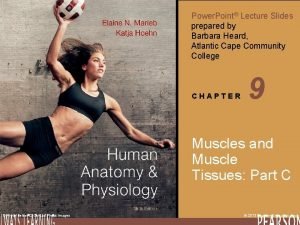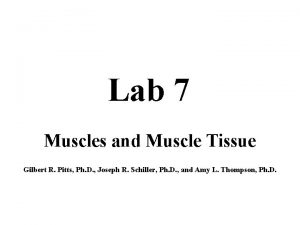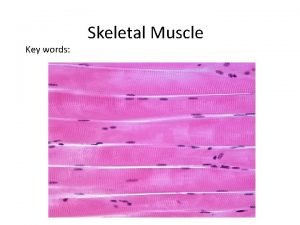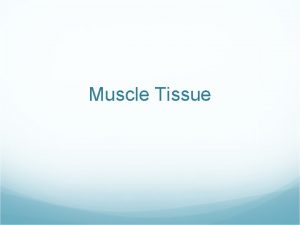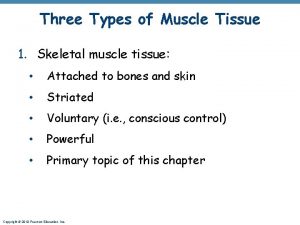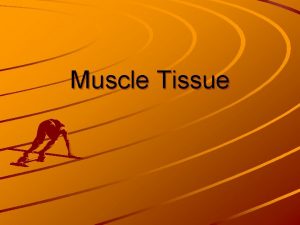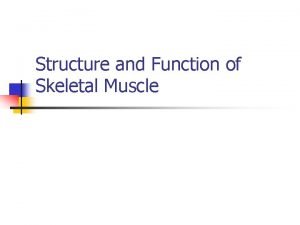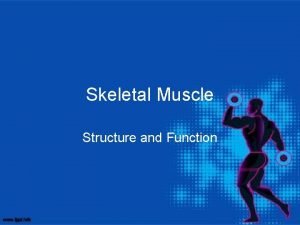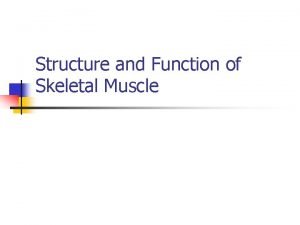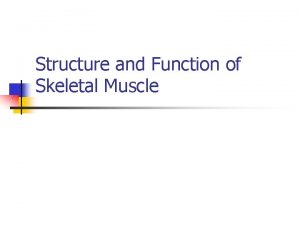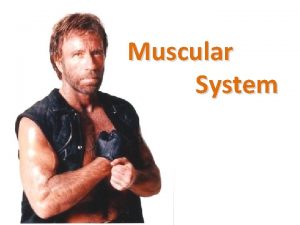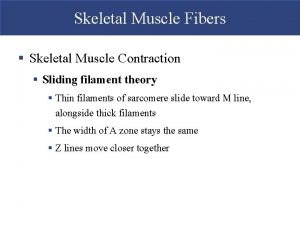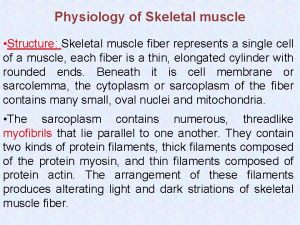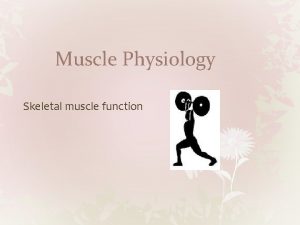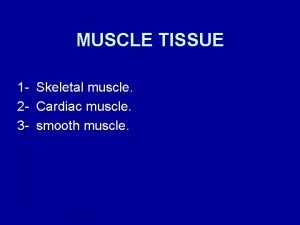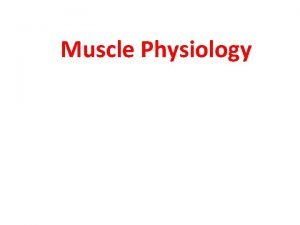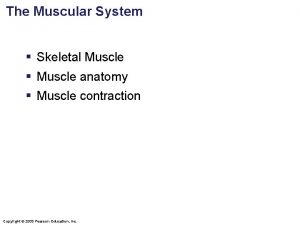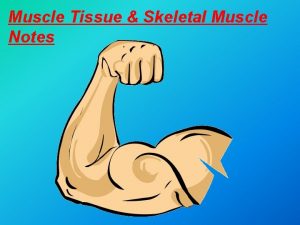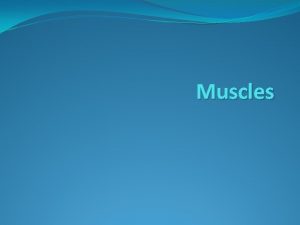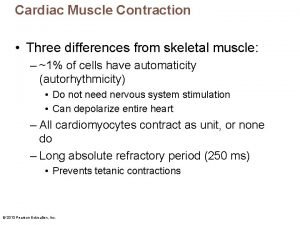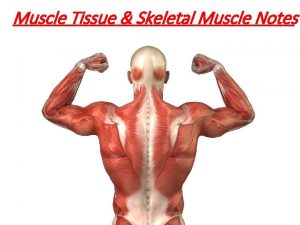Ch 12 Muscle Three types of muscle Skeletal


























- Slides: 26

Ch. 12 Muscle • Three types of muscle • Skeletal muscle – Anatomy – Arrangement of muscle fibers – Filaments in muscle fibers – Proteins in muscle filaments – Other parts of muscle fibers

Three types of muscle • Skeletal muscle • Cardiac muscle • Smooth muscle

Muscles generate movement and force. Sometimes muscles generate force without movement. The muscle is a collection of muscle cells. Each muscle cell is called a muscle fiber. The muscle contains muscle fibers, blood vessels, nerve fibers, connective tissue. The muscle cell (fiber) is multinucleated.

Motor unit • A single motor neuron and all the muscle fibers that it innervates.

Muscle fiber anatomy: lots of myofibrils

Myofibrils are contractile elements. Thick filaments: myosin Thin filaments: actin

Sarcomere Thick filament (myosin) Thin filament (actin) M line

M line

(F-actin polymers)

Other components of the muscle fiber




Nebulin, not elastic, helps to align the actin filament Titin, a huge elastic molecule stabilizes the position of the contractile proteins And returns sarcomere to its resting length after stretching.

Skeletal muscle contraction • • Contraction, force and tension Sliding Filament Theory of Contraction cycle Regulation of the contraction cycle

Muscle contraction • Movement or resist a load (force) • Load is the weight or force that opposes the contraction of a muscle • Tension is the force created by a muscle • Need ATP to generate tension

Observations during muscle contraction Muscle shortens when it moves a load. (When muscle contracts, it does not always shorten)

Observations during muscle contraction: A band does not shorten during contraction.

Sliding filament theory of contraction: movement and force Resting length How about force without movement?

During contraction • • • Z discs move closer together Sarcomere shortens A band same length I band reduced H band reduced

What pushes the actin filaments into the myosin? • Cross-bridges link myosin to actin • Power stroke: myosin head binds to actin myosin head release actin. Repeated many times. • Myosin molecules are flexible • ATP causes movement of myosin molecules

Myosin • A motor protein • Converts chemical bond energy of ATP to mechanical energy of motion • Each myosin as ATPase • Energy from ATP hydrolysis is stored as potential energy in the myosin molecule, and is used to create the power stroke.


Why don’t actin and myosin continuously bind together? • ATP is usually available • Actin’s binding site for myosin is revealed only during cross-bridge (binding). • During relaxation, actin’s binding site for myosin is concealed


 Refractory period cardiac
Refractory period cardiac Pharynx anatomy
Pharynx anatomy The five golden rules of skeletal muscle activity
The five golden rules of skeletal muscle activity Centrally acting skeletal muscle relaxants
Centrally acting skeletal muscle relaxants Skeletal muscle relaxants classification
Skeletal muscle relaxants classification Peripherally acting muscle relaxant
Peripherally acting muscle relaxant Antispasmodic
Antispasmodic Movable muscle
Movable muscle Comparison of skeletal cardiac and smooth muscle
Comparison of skeletal cardiac and smooth muscle Skeletal muscle relaxants classification
Skeletal muscle relaxants classification Characteristics of skeletal smooth and cardiac muscle
Characteristics of skeletal smooth and cardiac muscle Microscopic anatomy of skeletal muscles
Microscopic anatomy of skeletal muscles Macro and micro structure of the skeletal muscle
Macro and micro structure of the skeletal muscle Skeletal muscle organisation
Skeletal muscle organisation Skeletal muscle pump
Skeletal muscle pump Cardiac muscle cross section
Cardiac muscle cross section Multinucleated muscle cells
Multinucleated muscle cells 5 functions of a skeleton
5 functions of a skeleton Skeletal muscle relaxants classification
Skeletal muscle relaxants classification Microscopic anatomy of skeletal muscle figure 6-2
Microscopic anatomy of skeletal muscle figure 6-2 Dorsifelxion
Dorsifelxion Nerve supply skeletal muscle
Nerve supply skeletal muscle Skeletal muscle belly
Skeletal muscle belly Comparison of skeletal cardiac and smooth muscle
Comparison of skeletal cardiac and smooth muscle Purpose of skeletal muscle
Purpose of skeletal muscle Skeletal muscle cylindrical
Skeletal muscle cylindrical Skeletal muscle
Skeletal muscle

